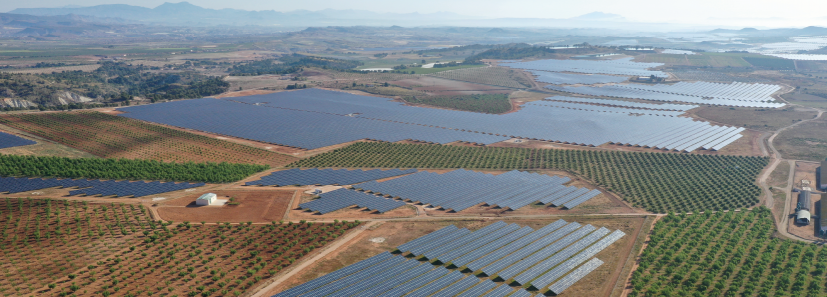
Northleaf's Jessica Kennedy recently spoke with Infrastructure Investor about the increasing appetite for co-investments.
How would you describe the level of demand you are seeing for co-investment at the moment and has that changed?
Northleaf’s infrastructure program began almost a decade ago and, over that period, demand for co-investment has increased substantially. We see appetite from institutions across a wide range of different geographies, sizes and types, as investor sophistication grows across the asset class. This is still a relatively new industry, of course, but the evolution of co-investment is mirroring the evolution of the broader infrastructure market.
What are the key drivers behind this increased demand?
As investors are becoming more sophisticated, they increasingly have specific portfolio construction goals and are using co-investment to help achieve them. We have seen this in private equity and real estate, and infrastructure is following the same path. It could be that an investor is underexposed to a particular geography in its fund portfolio, or perhaps underexposed to a certain sub-sector. That investor will then look to co-investment opportunities to achieve its optimum portfolio construction and to right-size any exposure mismatches. For example, we are seeing some investors looking to increase their exposure to renewable energy investments to achieve certain ESG-related goals, and to be able to report to their board and other stakeholders that they have a direct investment strategy with a positive environmental impact.
Another key reason that investors pursue co-investments is to average down fees. Co-investments are usually offered at a reduced or zero fee rate for those already invested in a manager’s fund program and can therefore bring average portfolio fees down significantly.
Which types of institutions are typically seeking co-investment opportunities?
The community of investors is somewhat country-dependent. For example, we see significant appetite among mid-sized Canadian institutional investors, following the lead of their larger, direct investing peers that have been active in the infrastructure market for years. Generally speaking, though, we see demand for co-investment across most OECD countries, among mid-size institutions and upwards. These are investors that have built an internal team, have already made a number of fund investments and have some co-investment experience under their belt. They trust their managers and are starting to double down on opportunities through a co-investment program alongside those managers.
We are also seeing certain investors co-investing in particular sub-sectors or regions. It could be a community pension plan supporting local infrastructure projects as part of the organization’s long-term goals, for example. In addition, we are seeing a lot of activity from sovereign wealth funds, with significant allocations to infrastructure to be invested – a portion of which is for co-investment.
Is a willingness to offer co-investment a significant factor in primary fundraising?
For some investors, co-investment is a huge factor in approving a primary fund commitment and it can certainly influence an institution's willingness to commit. Typically, investors will ask to see the history of co-investment opportunities that the manager has offered and ask for insight into which deals in the pipeline are expected to require co-investment capital.
Investors do need to be aware that the types of investments they are targeting might not necessarily be the investments that are offered as co-investments. As a passive investor looking for co-investment opportunities, you are subject to dealflow, which may or may not match the goals that you have.
Equally, a lot of investors will look to test out a new relationship with a co-investment so that they can assess whether a manager is targeting investments that are attractive to them. Then, if they like the way the manager conducts due diligence and runs its investments, they can progress to a fund commitment.
In what types of situations do you typically turn to co-investment?
At Northleaf, we tend to work with groups looking to invest between $25 million and $75 million per transaction. This aligns with our focus firmly in the mid-market. These types of ticket size can have a significant impact on whether a transaction gets done. We are typically looking to invest $100 million to $200 million of equity per deal, so a co-investor with a $25 million or $50 million ticket can be impactful.
Do you sometimes find, then, that investors are looking to put too much money to work?
That definitely can be the case. A co-investor looking to invest $300 million per deal would move us into a different market entirely. We would find it difficult to work with those types of investors because they’re in a different size category and we are committed to remaining focused on our OECD mid-market strategy.
And what types of deals are you pursuing alongside your co-investors?
Institutions that invest with Northleaf are typically looking to deploy in certain OECD geographies – the US, Canada, Australia and a select number of European countries. Within those geographies, they are typically targeting co-investments in traditional infrastructure sectors. Most of our investors are in the earlier stages of building out their co-investment portfolios, so for them it really is about looking for investments in countries with a demonstrated commitment to the rule of law, with a strong record of private ownership and a long usage history, if applicable. In other words, we target traditional, hard assets in developed markets.
How would you describe your appetite for offering co-investment? Has it changed and, if so, why?
We have offered co-investment since day one. What has changed for us, though, is that the number of investors interested in pursuing co-investment opportunities has increased and we are managing that by creating additional co-investment allocations.
For instance, in the past, when co-investment appetite was more limited, we might have brought another financial partner on board to complete a transaction. Now we look to co-investors that have participated in our funds in the first instance.
In working with co-investors rather than an external third party, Northleaf has a better understanding of our partners’ objectives and approach and is able to have increased control of an asset. We don’t have to worry about potential mismatches around exit timing, for example. This is optimal for driving an asset’s business plan to create long-term value.
How are your co-investments typically being structured and how do they work in practice?
Our co-investors typically invest through a limited partnership that sits alongside our fund vehicles. That goes back to the importance of Northleaf being able to control the asset with a view to creating long-term value. Depending on the transaction, there may be one or more investors in that co-investment limited partnership. There may also be multiple limited partnerships in order to satisfy various requirements of different types of investors, from different geographies.
In terms of the transaction process itself, our investors are primarily looking for sell-down opportunities, rather than co-bid situations. So, we have typically agreed a deal, at the very least, and perhaps even closed it, before we look to syndicate part of the exposure to our co-investors, as opposed to bringing the co-investors in at the time when we are negotiating a transaction. Many investors simply can’t take broken-deal costs and need certainty that a deal is going to be completed in order to engage.
Finally, we are also seeing growing interest among investors for discretionary, pooled, co-investment vehicles, where the manager has the ability to deploy capital to top up whichever deals need additional capital. These will not typically be investors looking to increase certain exposures, but rather those that are looking to average down fees and put capital to work in Northleaf’s target markets and strategies more quickly.
Does post-agreement syndication help investors get around the challenge of tight timelines with co-investment?
Interestingly, timelines can be tight – even in a sell down situation. There is always a learning curve for managers and co-investors that takes place over the first few deals that are completed together. It is important that investors are well equipped and able to move quickly. A co-investment might need to be executed in anywhere between four and 12 weeks, even in a post-deal syndication. Investors therefore need to be nimble and able to manage their approval processes quickly.
That said, there is absolutely more flexibility in a syndication than a co-bid. The other advantage is that the diligence material is already packaged and everything has been done. In a co-bid situation, you are completing due diligence in real-time and may be getting advice or reports coming in throughout the process, which can be more challenging for investors that really do need due diligence materials pre-packaged to take to their investment committee.
What other challenges can co-investment present for both LPs and GPs?
Something that we really value is transparency from our co-investors. It is helpful for co-investors to keep us up-to-date as they work their way through their due diligence and their approval processes. Is the transaction looking good? Do you expect any pushback? Have there been any delays in your timeline? Having open and honest dialogue is absolutely critical.
It can be very difficult for Northleaf if we are working with only one co-investor, for example, and then we find out at the 11th hour that their investment committee has turned the deal down. Were there signs along the way that could have been shared? Is there anything that we could perhaps have done to help them understand and to get the deal over the line? Good communication is essential.
How do you expect co-investment to evolve within the infrastructure industry?
We expect to see co-investment, and investment in infrastructure more broadly, continue to grow in size and sophistication. We expect to see an increasing number of investors seeking to access co-investment opportunities and for those investors to continue to refine their due diligence processes to be able to move quickly and efficiently through approvals. Everyone will continue along the co-investment learning curve that has been embarked upon.

Jessica is involved in all aspects of Northleaf’s investor relations, business development and communications activities with respect to Northleaf’s infrastructure funds, separately managed accounts and co-investment program.
